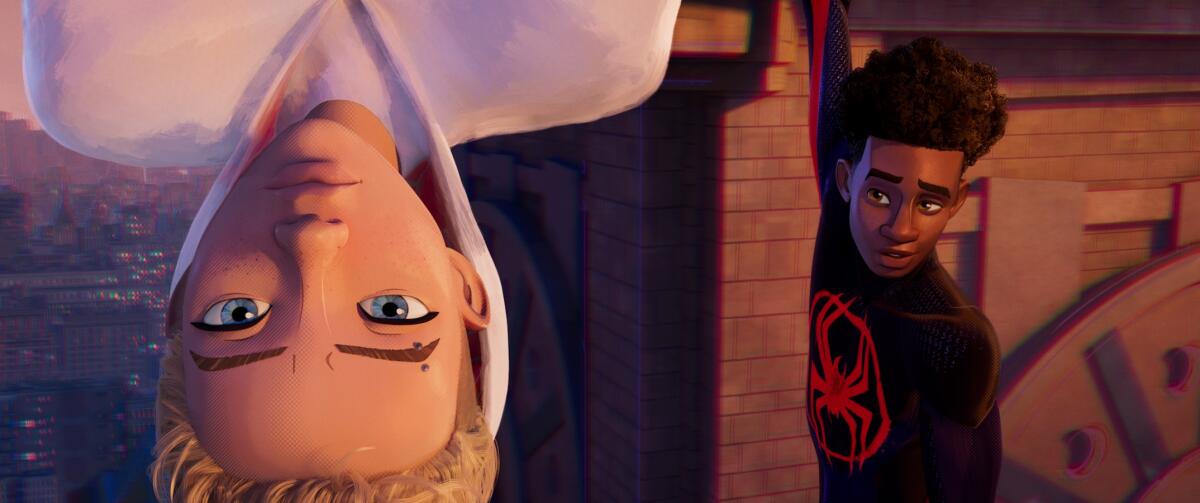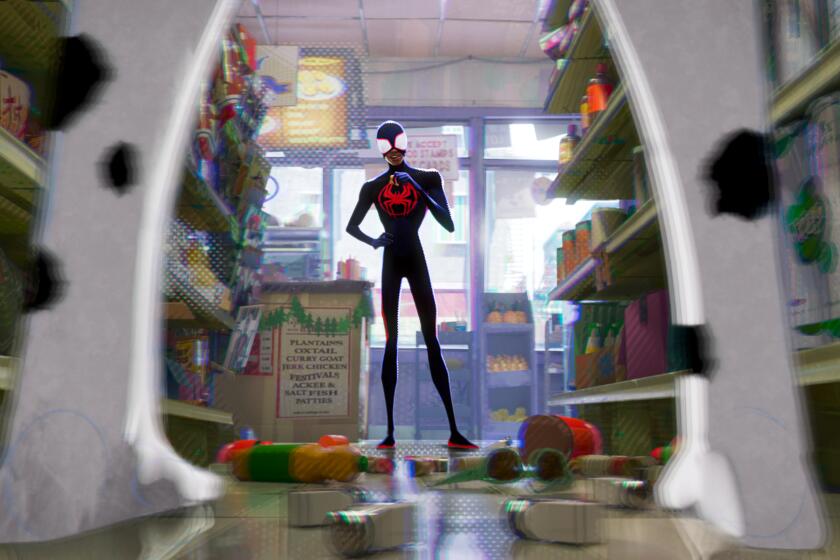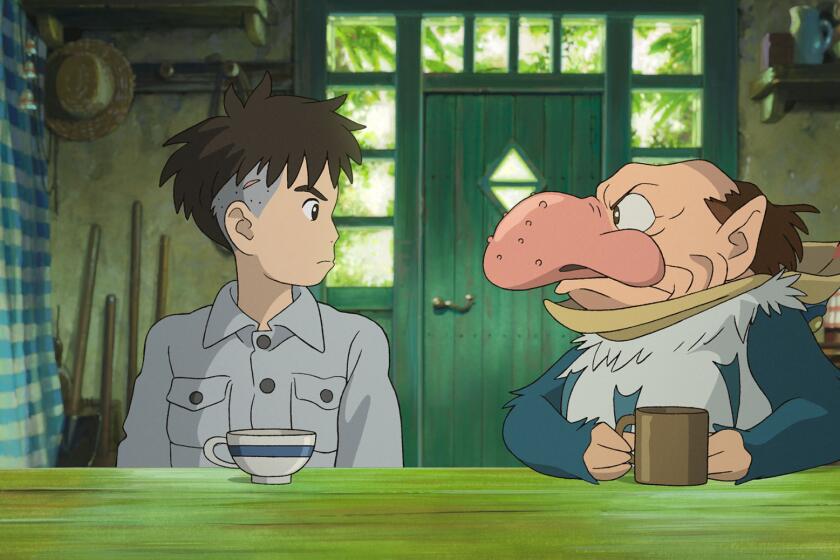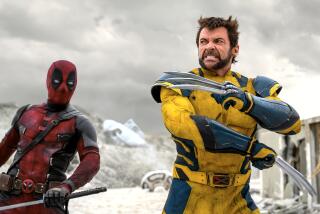With ‘Spider-Man,’ how do you top a winner? Try doing the opposite

- Share via
All we had to do was write a better movie than the one that just won an Oscar.
How do you follow up a film that’s best known for its wild originality?
We had the first line in the script, at least.
Let’s do things differently this time.
And … that’s all we had.
For “Spider-Man: Across the Spider-Verse,” despite the pressure to follow the formula that worked before, we knew if we coasted with a rehash of the same themes, dynamics, ideas and visuals as its predecessor, it would be a disappointment. This would have to be an entirely different kind of film. Cinematic in ways we couldn’t imagine yet. The drama more complex and sophisticated, the characters more mature.
The makers of the animated sequel knew it had to be different from its predecessor, while holding onto what’s the same in all the best Spider-Man movies: The vulnerable hero’s personal struggles.
And when you’re the guys that made “The Lego Movie” and the “Jump Street” films, “maturity” isn’t the first word that comes to mind. Thank God for our fellow writer Dave Callaham, who has facial hair and tattoos. He’s super mature.
The first “Spider-Verse” film started with a question: What does it take for a young person to thrive? The film had groundbreaking imagery, but it won the audience over on the strength of Miles Morales, an Afro-Puerto Rican teen, and his warm and affirming relationship with his parents. We wanted the new film to start with a new question: After you give that kid all the love you know how to give, what do you do when they want to leave home?
We had a friend who kept her apartment outrageously messy. One day her horrified mother came to visit, pointed to a photograph of our friend as a little girl and said, “This girl deserves to live in a clean room.”
That was the inspiration for a speech that Rio Morales gives her son that became the backbone of the movie.
For years I’ve been raising this little boy.… Wherever you go out there, you gotta promise to take care of that little boy for me … and don’t let anybody in those big fancy places he’s going to go to tell him he doesn’t belong there.

An animated film is written by many people. The directors and story artists and actors and editors and designers and lighting artists and animators are ultimately storytellers. The conversation in every production room wasn’t about the gorgeous exhilaration of cinematic expression, but about the grounding of that expression in story and character. How is Gwen feeling here? Could the world look how she feels?
That’s how a story that travels infinite aesthetic dimensions becomes a film about bridging the infinite intimate spaces between people who love each other.
We were so worried the audience wouldn’t have any patience for all these quiet scenes of people talking about their feelings and demand we get back to the people swinging around chasing one another. But every time we showed them the movie, they surprised us. The small stuff is what thrilled them the most.
We threw as many obstructions at ourselves as we could. What if the entire first reel focused on Gwen? What if the film was structured not as a hero’s journey, but as a tragedy? What if instead of finding his place in the world, Miles loses the whole time? What masochistic fools we were!
Sometimes you can be your own worst enemy.
But this time, we were amazing enemies. Because we were forced into moves we never would have tried otherwise. We made space for characterful scenes between parents and kids, found unlikely allies for Miles like Daniel Kaluuya’s Spider-Punk, exposed the redundancy of the term “naan bread.” All the while Miles’ character got only stronger and stronger, until instead of accepting the way everyone tells him his story is supposed to go, he declares:
Nah, I’m gonna do my my own thing.
When he finally returns home, he tells his mother how he’s grown:
I know how strong I am now.
The kid who felt pressure to follow what came before, like us, found his strength in doing the opposite.
Part of the hope in shaking up what’s expected from the clean, modern lines of today’s CG-rendered animation is that it will inspire the next generation of animators to feel free to use their own style.
The last line we wrote was the last line in the film:
I always wanted to be in a band
I just never found the right one
So I started my own.
A writer’s job isn’t to follow the canon. That can get you killed. Our job is to make something new.
More to Read
Sign up for The Envelope
Get exclusive awards season news, in-depth interviews and columnist Glenn Whipp’s must-read analysis straight to your inbox.
You may occasionally receive promotional content from the Los Angeles Times.








